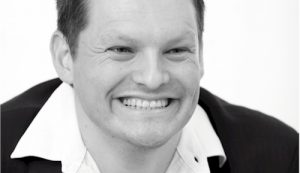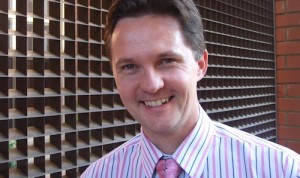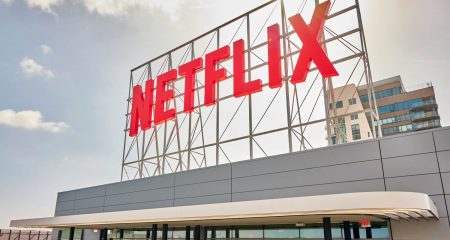
A year ago, SA’s first real uncapped broadband products arrived in the retail consumer market, shaking up the industry. At the time, the products faced both praise and criticism and questions were raised about their ability to succeed.
Now questions are again being asked about the model as the giants of the US telecommunications industry begin introducing capped, or metered, products for the first time.
Leader in the space was MWeb, which stunned the Internet industry with a relatively affordable offering that quickly came under fire for supposedly being unsustainable. Despite that, MWeb has grown a large base of customers using its uncapped service with many Internet service providers — the noteable exception was Telkom — following suit.
MWeb CEO Rudi Jansen is adamant its uncapped products are sustainable, even though other providers have said it is hard to make a profit from uncapped products. Just a year after SA began to embrace the uncapped model for broadband, US Internet providers have started backtracking on the uncapped model and are introducing large-cap offerings with cheap top-up options instead.
Last week, The Economist editorialised about moves by AT&T and Comcast to introduce capping in the wake of the rapid rise of Internet video downloads and online media streaming. AT&T has decided to cap its users monthly at between 150GB and 250GB limits depending on whether customers use copper or fibre access methods, and will charge $10 for every 50GB of data after that. Comcast is already capping at 250GB.
“Providers claim congestion, capacity limits, and other woes that are supposed to cajole the Federal Communications Commission [the US telecoms regulator] to limit its intervention, and keep lawmakers away,” The Economist says.

But the British business magazine says the root of the problem is Internet video. Suddenly, with services such as Apple’s Internet TV, Hulu and Netflix, users are pulling and pushing high-resolution video across the networks, and it’s the content companies, not the network providers that are cashing in on advertising revenues.
“The use of caps allows providers to dish out bandwidth with one hand and take it away with the other,” says The Economist.
The decision by US service providers to introduce capping has stunned US consumers, and raised fresh questions about whether their SA peers have made the right choice to go the uncapped route.
Jansen says the uncapped model is working well for MWeb, and although there has been an increase in the video content downloaded on its network, he says SA is still unlikely to follow the US in reverting to a capped model.
“Perhaps it was a good thing that SA was behind the international curve, because we could develop our model to make sure it was profitable by learning from their mistakes,” says Jansen.
US customers have known only uncapped and unshaped Internet access. SA uncapped offerings are almost all shaped to prevent bandwidth intensive peer-to-peer downloads on the networks. Shaping involves curtailing certain types of traffic and prioritising other types.
Jansen says US providers also may have not priced their products correctly when they started out, given that the fast rise in video content online was probably not expected.
But Internet Solutions MD Derek Wilcocks says there may be another reason wireless and wireline providers in the US are turning their backs on the uncapped model. “Voice tariffs in the US have reduced dramatically over the years and, where the providers used to be able to cross-subsidise for the cost of data, they can’t anymore. I don’t think they anticipated how much data they would have to field on their networks.”
Wilcocks says the US has witnessed a dramatic rise in fixed-mobile convergence and an increase in voice minutes carried over data connections. “You have seen a surge in the likes of Skype and companies such as Google and Microsoft entering the voice-over-Internet Protocol (VoIP) market,” he says.

SA has not yet witnessed a similar take-up of VoIP, although that is changing with many least-cost routing companies starting to push their customers in that direction.
Wilcocks estimates the total VoIP market in SA accounts for about R1bn of the total R80bn generated by telecoms companies. Least-cost routing, where companies route calls over the cheapest networks for their clients, accounts for about R5bn.
He says in the SA market, tight regulatory controls and the fact that even VoIP providers still have to terminate their calls on a fixed or mobile network, means local operators are not yet too concerned about their networks becoming a “dumb pipe” over which third parties provide services at better margins.
He says few of the troubles plaguing the US market are a worry in SA, and uncapped offerings here still make sense, but only on the consumer side. “Uncapped business users are realising what shaping means, but for the consumer it doesn’t matter how long a video takes to download,” he says.
Afrihost CEO Gian Visser says providing an uncapped offering is exceptionally hard in SA, and making a profit is not easy. He says if SA providers hope to avoid the same fate as their US counterparts, Telkom needs to come to the party.
Telkom controls the fixed-line broadband digital subscriber line (DSL) network in SA, though this may change before the end of the year when Telkom’s copper to homes is opened up to rivals.
At the moment, SA Internet service providers have to buy what is known as Internet Protocol Connect (IPC) from Telkom to sell bandwidth over DSL. It is estimated that the IPC cost represents about 50% of the cost consumers pay for bandwidth that doesn’t come directly from Telkom. When one considers that companies like Afrihost still have to pay for international capacity, marketing costs, salaries and other sundries, the cost of providing an uncapped offering becomes less feasible.
Visser says companies such as Afrihost and MWeb have had to take a long-term view when providing uncapped products in the hope that either the cost of IPC will come down, or the products will gain enough critical mass to be profitable.
“The US never really had capped products, so they immediately had the critical mass. High-end users could be balanced by low-bandwidth users,” he says.
However, the situation is very different in SA, with primarily high-end users taking up uncapped solutions and low-end users using capped offerings. Some users are also abusers and Visser says when Afrihost first launched its product about 2% of users were using about 50% of the bandwidth.
If Telkom dropped the average cost per gigabyte for access to the IPC, Visser says the uncapped solutions would be more sustainable financially. But, by the same token, Telkom could wipe out uncapped services by increasing its IPC pricing.
Local-loop unbundling (or making the Telkom’s copper available to other providers) could change the situation dramatically. “We don’t want to lose uncapped and it’s our aim at Afrihost to make sure it is here to stay,” Visser says. – Candice Jones, TechCentral
- Subscribe to our free daily newsletter
- Follow us on Twitter or on Facebook




